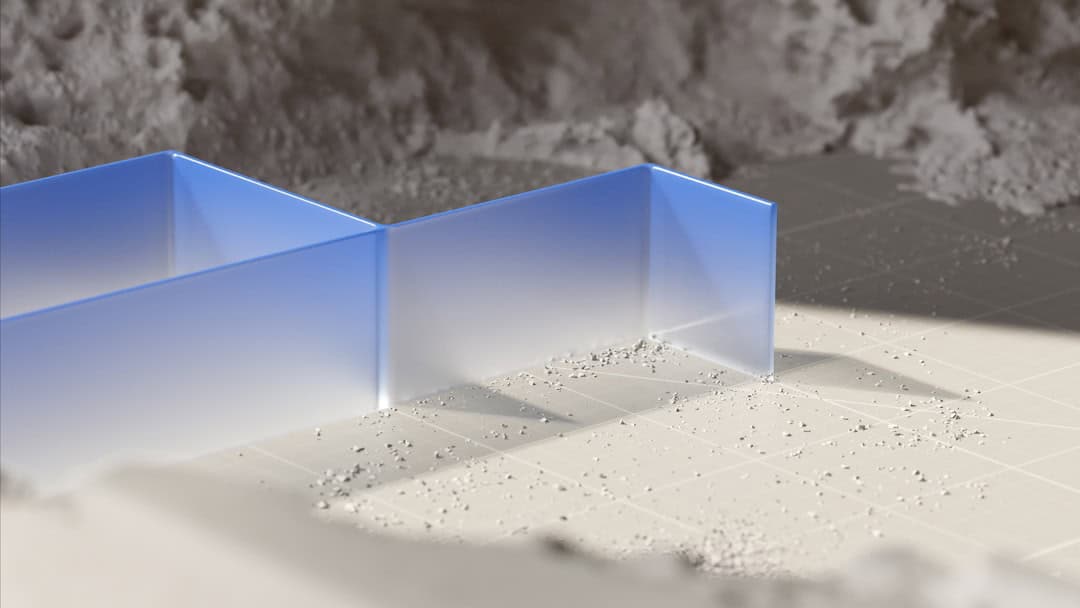Artificial Intelligence (AI) deep learning is a specialized branch of machine learning, which itself is a subset of AI. Deep Learning algorithms aim to replicate the human brain’s capacity for data processing and pattern recognition to facilitate decision-making. These algorithms utilize artificial neural networks with multiple layers to extract increasingly complex features from raw input data.
This approach enables AI systems to learn from both structured and unstructured data. Deep learning models require extensive training using large datasets of labeled information and can perform various tasks, including image and speech recognition, as well as natural language processing. The design of deep learning algorithms allows for continuous learning and improvement through experience, making them well-suited for complex task management.
These algorithms can automatically adapt to new data and produce accurate results, distinguishing them from traditional machine learning techniques. Deep learning models are also capable of unsupervised learning, allowing them to identify patterns in data without explicit programming. This versatility makes deep learning applicable across a wide range of industries and use cases.
Key Takeaways
- AI deep learning involves training algorithms to learn from data and make predictions or decisions, mimicking the way the human brain works.
- AI deep learning has potential applications in various industries such as healthcare, finance, transportation, and manufacturing, to improve efficiency and decision-making processes.
- Challenges in implementing AI deep learning include the need for large amounts of high-quality data, the complexity of algorithms, and the requirement for specialized talent.
- AI deep learning can benefit industries by improving customer experience, optimizing operations, and enabling predictive maintenance and risk management.
- Enhancing AI deep learning with data analytics and machine learning can improve the accuracy and efficiency of AI algorithms, leading to better decision-making and insights.
Exploring the Potential Applications of AI Deep Learning
The potential applications of AI deep learning are vast and diverse, spanning across various industries. In healthcare, deep learning algorithms can be used for medical image analysis, disease diagnosis, drug discovery, and personalized treatment plans. In finance, AI deep learning can be utilized for fraud detection, risk assessment, algorithmic trading, and customer service chatbots.
In the automotive industry, deep learning is crucial for autonomous vehicles, enabling them to perceive their environment and make real-time decisions. AI deep learning also has applications in retail for demand forecasting, personalized marketing, and customer service automation. In manufacturing, it can be used for predictive maintenance, quality control, and supply chain optimization.
In the field of agriculture, deep learning can help with crop monitoring, yield prediction, and pest detection. Additionally, AI deep learning has potential applications in entertainment, gaming, cybersecurity, and more. The ability of deep learning algorithms to process and analyze large volumes of data makes them invaluable for solving complex problems and driving innovation across industries.
Overcoming the Challenges of Implementing AI Deep Learning

While the potential of AI deep learning is immense, there are several challenges that need to be addressed in order to effectively implement these technologies. One of the main challenges is the need for large amounts of labeled training data. Deep learning models require extensive datasets to be trained effectively, which can be difficult and costly to obtain in certain domains.
Additionally, the training process for deep learning models can be computationally intensive and time-consuming, requiring significant computational resources. Another challenge is the interpretability of deep learning models. Due to their complex nature and multiple layers, it can be difficult to understand how these models arrive at their decisions.
This lack of transparency can be a barrier to adoption in industries where interpretability is crucial, such as healthcare and finance. Furthermore, there are concerns around the ethical implications of AI deep learning, particularly in terms of bias and fairness in decision making. Addressing these challenges will require collaboration between technologists, domain experts, policymakers, and ethicists to ensure that AI deep learning is implemented responsibly and ethically.
Harnessing the Benefits of AI Deep Learning in Various Industries
| Industry | Application | Benefits |
|---|---|---|
| Healthcare | Medical imaging analysis | Improved diagnosis accuracy and speed |
| Finance | Fraud detection | Enhanced security and reduced financial losses |
| Retail | Customer behavior analysis | Personalized marketing and improved customer experience |
| Manufacturing | Quality control | Increased production efficiency and reduced defects |
Despite the challenges, the benefits of AI deep learning in various industries are substantial. In healthcare, deep learning algorithms have the potential to revolutionize disease diagnosis and treatment by analyzing medical images and patient data with unprecedented accuracy. This can lead to earlier detection of diseases, personalized treatment plans, and improved patient outcomes.
In finance, AI deep learning can help institutions detect fraudulent activities more effectively, make better investment decisions, and enhance customer service through chatbots and virtual assistants. In the automotive industry, the use of deep learning in autonomous vehicles has the potential to significantly reduce accidents and improve transportation efficiency. In retail, deep learning can enable businesses to better understand customer behavior and preferences, leading to more targeted marketing strategies and improved customer satisfaction.
In manufacturing, AI deep learning can optimize production processes, reduce downtime through predictive maintenance, and improve product quality through automated inspection systems.
Enhancing AI Deep Learning with Data Analytics and Machine Learning
AI deep learning can be further enhanced by integrating it with data analytics and machine learning techniques. Data analytics provides the foundation for understanding and extracting insights from large volumes of data, which is essential for training deep learning models effectively. Machine learning techniques such as reinforcement learning can be combined with deep learning to enable continuous learning and decision making in dynamic environments.
Furthermore, advancements in data analytics and machine learning can help address some of the challenges associated with AI deep learning, such as the need for labeled training data and model interpretability. By leveraging these complementary technologies, organizations can unlock the full potential of AI deep learning and drive innovation across various domains.
Addressing Ethical and Privacy Concerns in AI Deep Learning

As AI deep learning becomes more pervasive across industries, it is crucial to address ethical and privacy concerns associated with these technologies. One of the main ethical concerns is the potential for bias in AI decision making. Deep learning models are trained on historical data, which may contain biases that can perpetuate unfair outcomes.
It is important for organizations to actively mitigate these biases by ensuring diverse and representative training datasets, as well as implementing fairness-aware algorithms. Privacy concerns also arise from the vast amounts of data required to train deep learning models. Organizations must prioritize data privacy and security to protect sensitive information from unauthorized access or misuse.
This includes implementing robust data governance practices, anonymizing personal data where possible, and obtaining explicit consent for data usage.
Looking Towards the Future of AI Deep Learning and its Impact on Society
The future of AI deep learning holds immense potential for transforming society across various domains. As technology continues to advance, we can expect to see further integration of AI deep learning into everyday life, from personalized healthcare solutions to autonomous transportation systems. However, it is important to approach these advancements with a critical lens and consider the broader societal implications.
In order to realize the full benefits of AI deep learning while mitigating potential risks, it will be essential for organizations to prioritize transparency, accountability, and ethical considerations in their implementation of these technologies. Collaboration between industry stakeholders, policymakers, and ethicists will be crucial for shaping a future where AI deep learning contributes positively to society while upholding ethical standards and privacy rights. In conclusion, AI deep learning represents a powerful tool for driving innovation across industries and solving complex problems.
By understanding the basics of AI deep learning, exploring its potential applications, overcoming implementation challenges, harnessing its benefits, integrating it with data analytics and machine learning, addressing ethical concerns, and looking towards the future impact on society, we can ensure that AI deep learning is leveraged responsibly for the betterment of humanity.
If you’re interested in the intersection of artificial intelligence and virtual reality, you may want to check out this article on the social dynamics in the metaverse. The piece explores how AI and deep learning technologies are shaping the way people interact and communicate in virtual environments. It’s a fascinating look at the potential impact of these technologies on our social lives. You can read the full article here.
FAQs
What is artificial intelligence (AI)?
Artificial intelligence (AI) refers to the simulation of human intelligence in machines that are programmed to think and act like humans. It involves the development of computer systems that can perform tasks that typically require human intelligence, such as visual perception, speech recognition, decision-making, and language translation.
What is deep learning?
Deep learning is a subset of machine learning, which in turn is a subset of artificial intelligence. It involves the use of algorithms known as neural networks, which are inspired by the structure and function of the human brain. Deep learning algorithms can learn to recognize patterns and make decisions from data, and are particularly well-suited for tasks such as image and speech recognition.
How is deep learning used in artificial intelligence?
Deep learning is used in artificial intelligence to enable machines to learn from large amounts of data and make decisions without human intervention. It is used in a wide range of applications, including image and speech recognition, natural language processing, autonomous vehicles, and medical diagnosis.
What are some examples of deep learning in everyday life?
Some examples of deep learning in everyday life include virtual assistants like Siri and Alexa, which use natural language processing to understand and respond to user commands; recommendation systems used by companies like Netflix and Amazon to suggest products and content based on user preferences; and facial recognition technology used in smartphones and security systems.
What are the benefits of deep learning in artificial intelligence?
The benefits of deep learning in artificial intelligence include the ability to process and analyze large amounts of data quickly and accurately, the potential for automation of complex tasks, and the ability to make predictions and decisions based on patterns and trends in data. Deep learning also has the potential to improve the accuracy and efficiency of many applications, from healthcare to finance to transportation.











Leave a Reply